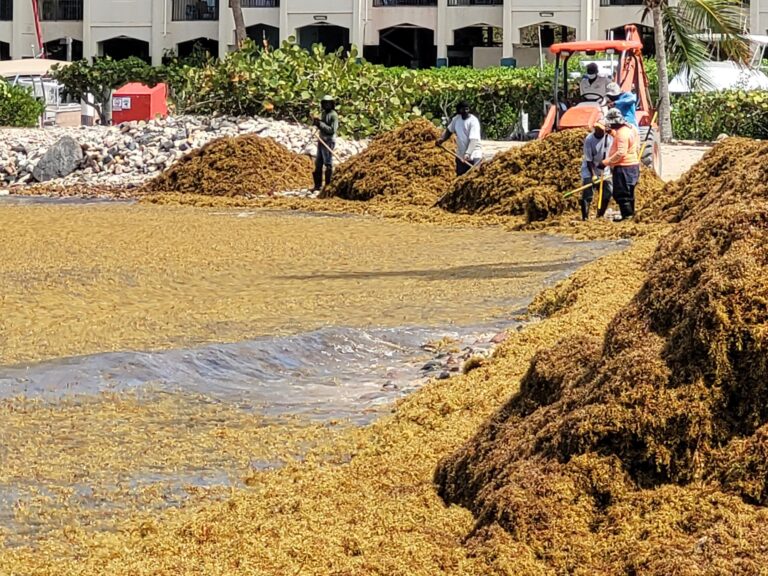Floating Sargassum seaweed in the Caribbean provides habitat and nurseries for a variety of marine life. However, in recent years, the region has seen a dramatic increase in the extent and frequency of this brown macroalgae that ultimately washes ashore, often with devastating impacts for coastal economies and ecosystems.
To better understand residents’ perceptions of this phenomenon, NCCOS-funded researchers surveyed community members about Sargassum event incidence, impacts, and management. In total, 633 individuals participated in the survey, representing 39 national, provincial, and territorial governments across the Caribbean.

Sargassum’s impact on tourism and recreation was the paramount concern of study respondents. Smelly and unsightly Sargassum on beaches drives tourists away, and excess Sargassum in the water restricts leisure activities such as swimming, snorkeling, and fishing. Adding to the lost revenue from lost tourism, cleanup and disposal costs are also considerable. In Quintana Roo, Mexico, for example, Sargassum cleanup efforts are estimated to cost as much as $1.1 million per kilometer per year.
Public health concerns also figured prominently among survey respondents. Decomposing Sargassum emits hydrogen sulfide and ammonia that, at high levels, can cause negative health outcomes. One study found that people exposed to Sargassum for at least a week exhibited adverse respiratory, dermatological, and neurological symptoms.
Historically, the majority of Sargassum was located in the Sargasso Sea in the western North Atlantic. However, in 2011, the geographic range of Sargassum expanded to include what is now known as the “Great Atlantic Sargassum Belt,” a Sargassum-rich area that stretches from West Africa to the Gulf of Mexico. The belt is thought to be fueled by an increase in the availability of land-based nutrients, particularly nitrogen, along with warming waters. Survey respondents perceived Sargassum events to be most severe, frequent, and disastrous in the western, central, and eastern parts of the Caribbean, along the main path of the belt.
In general, survey respondents had negative views of current Sargassum policies and management efforts, especially in the western, central, and eastern Caribbean. Survey findings can give local governments a regional baseline for the social impacts of Sargassum and can offer insights into which communities are most affected and which mitigation strategies might work best.
